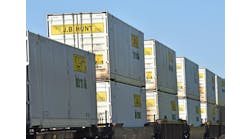Dramatically higher fuel surcharges are the primary driver of the accelerated growth in LTL and parcel costs in Q2 2022, while driver shortages and labor costs support continued truckload growth even as forecasted demand softens, according to a the April 2022 Cowen/AFS Freight Index, a quarterly transportation pricing snapshot with predictive pricing across multiple sectors in the freight industry.
“Rising fuel prices are no secret. The average cost of diesel in the U.S. going up over a dollar in just a month made plenty of headlines, and in a tight capacity market carriers are responding with significantly higher fuel surcharges,” says Tom Nightingale, CEO, AFS Logistics, in a statement. “Shippers should expect rising rates across the board, as those higher fuel surcharges join the usual suspects like capacity constraints, GRIs, firm pricing policies and steep accessorial increases to intensify upward pricing pressure.”
Key implications for truckload shippers
Data indicates continued rate-per-mile increases, albeit at a slower rate compared to 2021. Compared to the January 2018 baselines, the index is expected to grow from 25.2% in Q1 to plateau at 27.1% in Q2, a lower growth rate than previous quarters.
The correlation between price and distance remains strong, and the overall miles per shipment increased 3.2% in Q1 compared to the previous quarter. Market forces like the driver shortage and higher labor costs continued to support cost-per-shipment growth in Q1 2022, but early data indicates truckload demand in 2022 will be softening compared to 2021.
Key implications for LTL shippers
Fuel is a major driver of cost-per-shipment growth in Q1 2022 and expected increases in Q2. Disruptions to global oil supply and continued high demand resulted in LTL carriers adjusting fuel surcharge tables, causing significant increases to fuel-related costs in the first quarter of 2022. Among major LTL carriers, the average fuel charge increased from 28.3% in Q4 2021 to 42.1% in March 2022.
Pressure from fuel, capacity constraints, firm pricing policies and accessorial charges are not expected to abate, and the LTL index is expected to reach an all-time high of 40.9% in Q2 2022 compared to the January 2018 baseline – a 4% quarter-over-quarter increase. With LTL rates at historic highs, shippers are considering alternatives like shipment consolidation, multi-stop truckload and additional warehousing solutions to help manage freight spend.
Key implications for ground and express parcel shippers
Both FedEx and UPS recently implemented significant changes to fuel surcharges, resulting in increases of 129% in express parcel and 89% for ground parcel compared to October 2021. The fuel surcharge increases outpaced the corresponding indices that drive fuel surcharge levels published by the U.S. Energy Information Administration – the USGC Kerosene-type jet fuel rates for express parcel and on-highway diesel fuel prices for ground parcel. To better capture the volatility of fuel cost, UPS joined FedEx in reducing the lag time in its fuel surcharge adjustments from two weeks to one week.
For express parcel, record-high general rate increases (GRIs), accessorial increases and higher fuel surcharges drove a quarter-over-quarter increase of 5.8% in Q1 2022. The GRIs pushed a sharp increase in parcel express rates in January 2022, but declining weight brought the average rate per package to a more moderate level. On a quarter-over-quarter basis, the express parcel net effective fuel surcharge increased 24.7% in Q1 2022. Looking ahead, the express parcel index is forecasted to stay above the 2018 baseline, growing from 0.8% in Q1 to 1.8% in Q2 2022.
The ground parcel index continued to increase, and is expected to reach an all-time high of 24.6% in Q2 2022, primarily driven by carriers leveraging fuel surcharges to boost per package cost. In Q1 2022, the net effective fuel charge was 17% higher than the previous quarter and 70% greater on a year-over-year basis.



